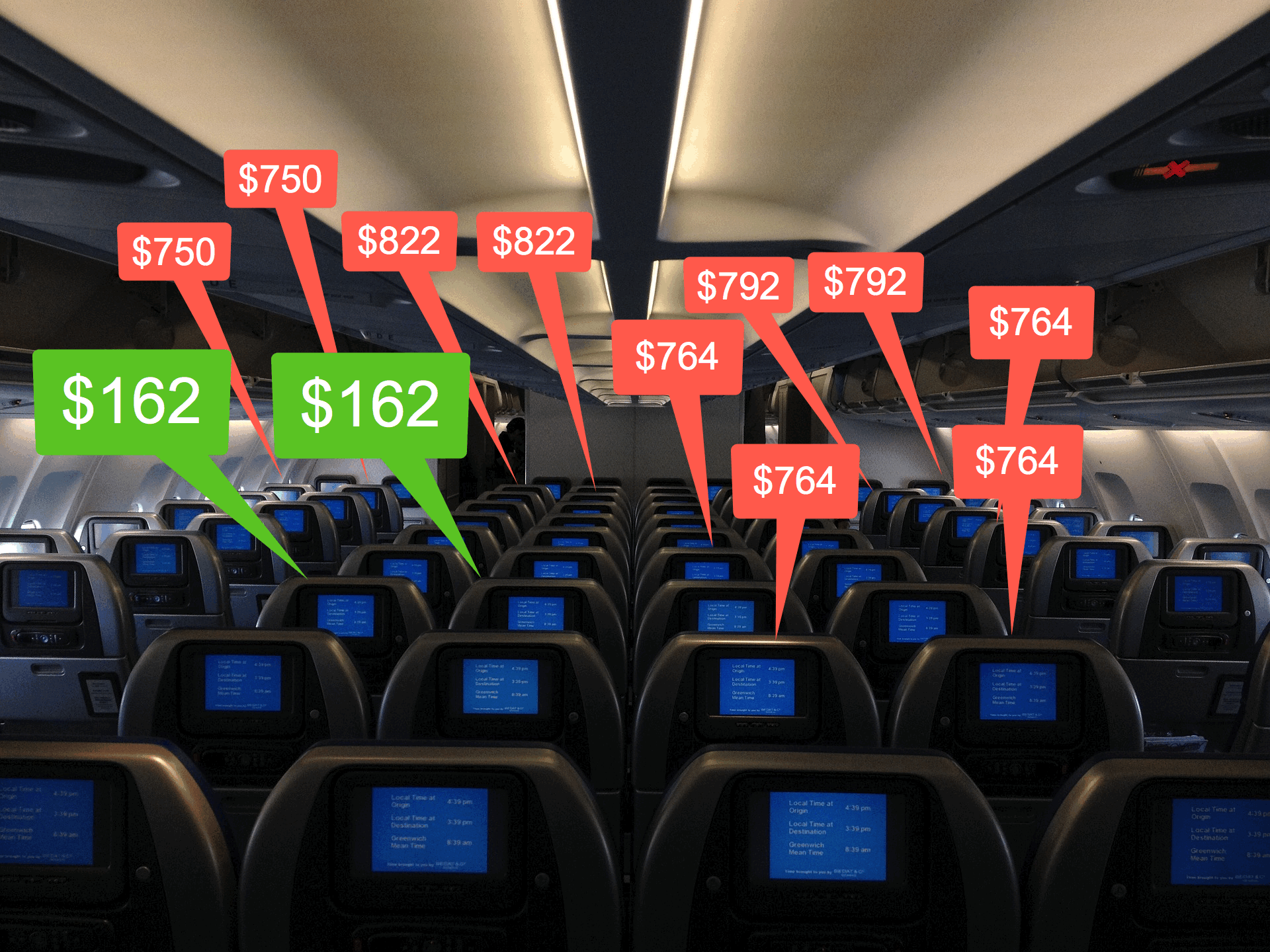
Every airline in existence uses sophisticated computer algorithms that determine how to get the highest price possible for every seat on their planes. 99% of the time, they do a really effective job of extracting every dollar possible out of every seat on their plane.
However… About once every 300 or 400 flights – they get it wrong and under-sell seats – and that can cost them tens of thousands of dollars in cancelled/rescheduled flights. To avoid that problem, they need to get a handful of butts in a handful of seats… and they need to do it in a hurry.
This isn’t just for last-minute flights either. To avoid cancelling as many flights as possible, they start error-correction as early as 9 months in advance.
Some people call these “mistake fares” but it’s never a mistake when this happens. In fact, it’s very deliberate. (I prefer to call them “Butt in seat” fares because the airlines will reward you handsomely for putting your butt in their otherwise un-sold seat.)
It works something like this:
- 9 months before a flight, if the flight is not at least 20% booked, the airline will slash prices drastically in order to sell at least 20% of their seats. As soon as they fill those seats, prices go back to normal. If they don’t fill those seats, they cancel the flight, go through the expensive process of rescheduling existing passengers and crew, and again – prices go back to normal.
- 6 months (+/-) before the flight, they go through the same process if they’re not at least 40% booked.
- 3 months out? Same thing if they’re not 60% sold.
- Then again 2 months out, 1 month out, 2 weeks out…
- You get the idea.
They can’t advertise these sales because they usually only have a handful of seats at that price. Instead, they just quietly slash prices, knowing some lucky traveler will stumble across that fare and snatch it up.
- These opportunities present themselves every day from every airport in the country, and can be anywhere from a week in advance to 9 months in advance.
- Sometimes it means getting a $300 flight for $30 or $40 and visiting friends and family even when you weren’t planning on it.
- Other times, it means getting a $1200 flight for $200 to $500, and taking that vacation you’ve been putting off for years.
- With the tiniest bit of flexibility, it can mean traveling two or three times as often on the same budget as one trip “the normal way”.
Unfortunately, airlines refuse to pay commissions on those types of flights – so there is no incentive for traditional travel sites or travel agents to find those opportunities for you other than you stumbling across them when searching for your trip.
If you want to find trips like this, you’ve got 3 options:
- Rely on luck of the draw and hope to stumble across something whenever you plan a trip. (Every once in a while, you’ll get lucky (and the more locations you’re willing to search for, the luckier you’ll get.)
- Set up free fare watches through a site like Google Flights or Airfare Watchdog from your home airport, watch every day, and when one of those locations has a drop in fare – snatch it up. (Again – the more locations you watch, the better your odds.)
Sound like a lot of work? It’s not hard at all. Tedious… But not hard. Either of the above options will take 10 to 15 hours of research a month (depending mostly on how many destinations you keep an eye on.)
Option 3: Subscribe to a trip alert service that is not on commission (because most of these fares don’t pay a commission), and focuses solely on finding those types of fares.
When something jumps out at you, it’s usually far enough in advance that you can plan around it, and you’ll find yourself traveling more often – for less money.
To see if I offer a trip alert service in your home airport, click here.
Happy travels!
–Joel